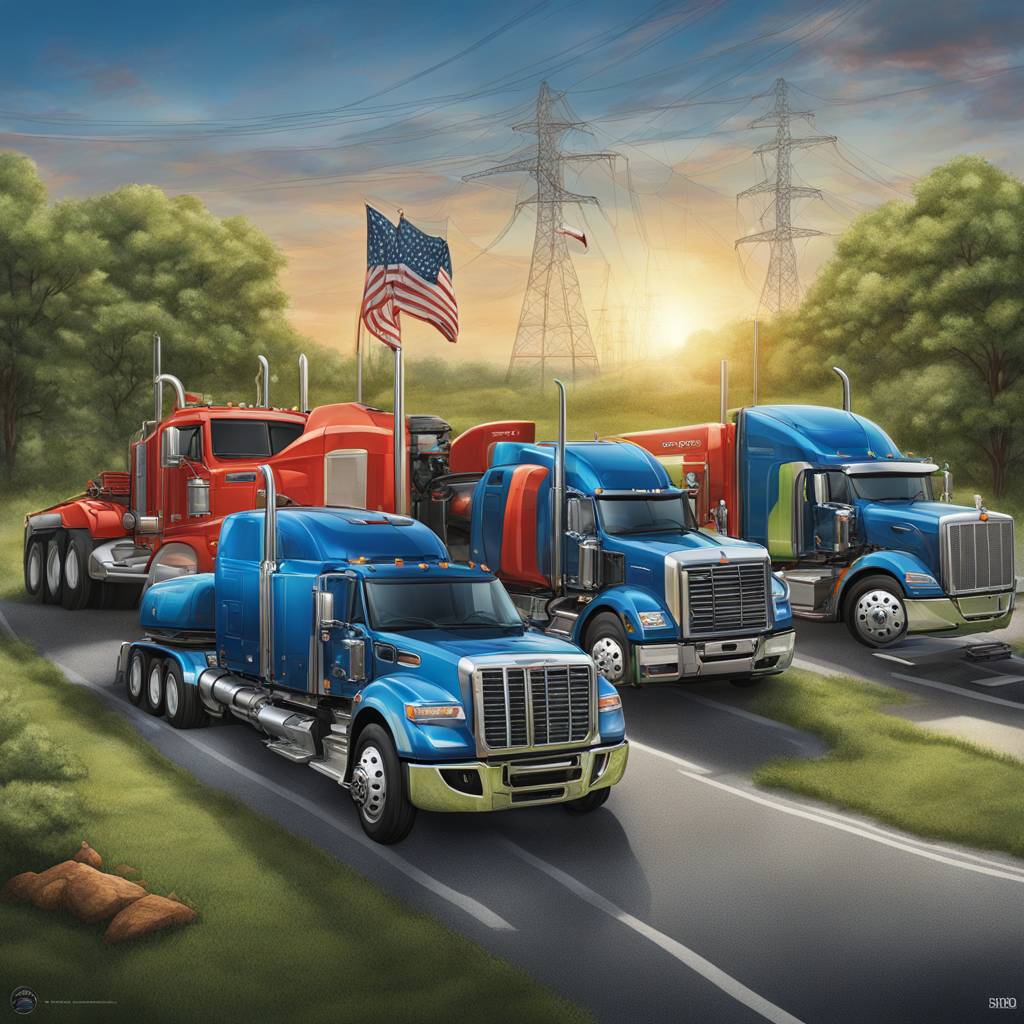The White House has established new emissions standards to reduce pollution from new trucks and tractors, with the Environmental Protection Agency delaying the implementation of the new mandate due to concerns about a lack of electric vehicle charging stations. The regulations will require the heaviest commercial vehicles to meet tighter emissions standards by model years 2029 and 2030, with lighter trucks beginning to reduce emissions by model year 2027. By model year 2032, work trucks and tractors will need to reduce CO2 emissions by between 25% and 60%, depending on weight category.
The new emissions standards aim to address the contribution of carbon dioxide emissions from trucks and tractors to global warming and climate change. This move is part of the Biden administration’s efforts to combat climate change and promote public health by reducing pollution. The EPA has projected that the new rules will avoid 1 billion tons of greenhouse gas emissions and provide $13 billion in annualized net benefits to society. Administrator Michael Regan emphasized the importance of making significant cuts in emissions from the transportation sector to address the urgency of the climate crisis.
However, the new rules have been met with industry concerns about the feasibility of commercial trucks recharging on highways and the potential cost to manufacturers. The Truck and Engine Manufactures Association expressed worries that the final rule may be the most challenging, costly, and disruptive heavy-duty emissions rule in history. The association highlighted concerns about the higher costs of zero-emission vehicles compared to traditional vehicles, as well as the need for sufficient infrastructure to support the transition to electric vehicles.
The industry group pointed out that trucking fleets require a competitive total cost of ownership for zero-emission vehicles to consider purchasing them in sufficient volume. Without this financial incentive and adequate infrastructure, fleets may continue to rely on traditional vehicles, leading to negative economic consequences, job losses, and prolonged environmental impacts. The potential unintended consequences of the regulations include manufacturers selling fewer ultra-clean diesel trucks to remain compliant, resulting in older, higher polluting trucks remaining on the road longer.
The Biden administration has allocated funds for electric vehicle charging stations in the bipartisan infrastructure bill, with provisions for states to build out Alternative Fuel Corridors along major roadways. These corridors will require electric vehicle stations every 50 miles, with local governments providing a portion of the funds for the projects. The focus on expanding infrastructure for electric vehicles is part of a broader effort to support the transition to cleaner transportation options and reduce emissions from the transportation sector.















